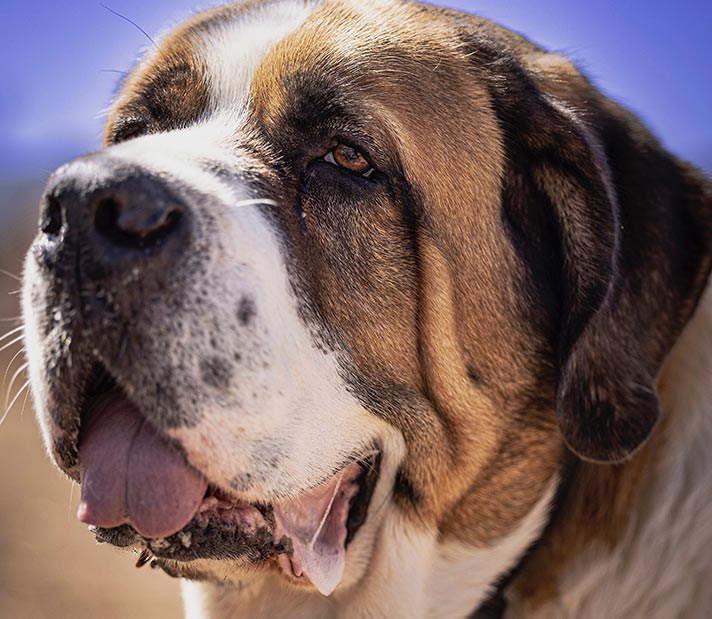Paws for Thought – submitted for Jacksonville Review May 2023 issue – published online-only
In veterinary medicine, there are some conditions that we can almost diagnose just by the description provided by the pet owner. An older cat that is drinking a lot, urinating a lot, and losing weight—we worry about diabetes or kidney disease. A young Labrador retriever that loves to play with toys and is now vomiting—we instantly think of an intestinal foreign body. When we hear about a large breed dog (typically) that is hacking up foam and has a distended abdomen—this sets off our alarms as we are worried about a GDV, commonly referred to as bloat.
All of the above examples are emergencies and should be addressed right away, but when it comes to GDV, it MUST be addressed right away as it is almost always fatal if the animal is not treated the same night symptoms are noted.
GDV stands for Gastric Dilatation and Volvulus. It basically means the stomach has filled with gas and is twisted. It is this last aspect that creates the extreme emergency of the situation, as the twisting of the stomach cuts off blood supply to the stomach and results in shock. Technically, the term “bloat” just refers to a distended stomach from either gas or often excess consumption of food. (Most Labrador and beagle owners have experienced this). Bloat by itself does not constitute an emergency, but it can lead to a twisted stomach, so I still recommend having dogs checked out immediately.
It is not known what causes GDV. There is some thought that it is related to a dog eating a large meal and then exercising right away where the dog starts breathing hard. It is for this reason that we often recommend not exercising a dog right after eating. This is especially true of dogs that are prone to GDV. These are typically large breed dogs with deep chests like Great Danes, Weimaraners, German Shepherds, and Newfoundlands. I have also seen a lot of pit bull-like dogs with this syndrome. Any dog, though, can be afflicted as I have seen it in a Lhasa Apso and Dachshund (who, granted, have deep chests for their body size). I have never seen this condition in a cat, though I will not say it has never happened.
The signs of GDV are constant retching or vomiting that is unproductive or just produces a little foam. These dogs, also, have very hard and distended abdomens. They often feel like they have swallowed a basketball. They are also often very weak and are in a state of shock. They may not be able to walk or they may just stumble or stare off into space. If these signs are noticed, your dog needs to go to the veterinarian right away. The sooner this is treated, the much better the prognosis.
GDV most commonly happens in the evening. Emergency veterinarians are very adept at dealing with this condition as they see it frequently. One should never wait until the morning, though, to have their dog seen. Many dogs will die overnight if not treated, and, in my experience, those that wait until morning to be seen do not survive the treatment.
GDV can almost always be diagnosed with a high degree of accuracy just on physical exam. However, a radiograph (x-ray image) of the dog’s abdomen is needed to confirm the diagnosis.
Once the diagnosis is made, aggressive IV fluids are started and the dog is prepped for surgery. Surgery is the only chance to cure the dog. Before surgery, the air is released from the stomach either by passing a stomach tube or inserting a needle through the skin into the stomach. The stomach tube is the preferred method. In surgery, the dog’s abdomen is opened up, the stomach is untwisted, and the stomach is sutured (tacked) to the abdominal wall so that it will not twist again. Unfortunately, getting them through the surgery is only half the battle. After surgery, these dogs are prone to shock, arrhythmias, and often require extensive monitoring and continuous IV fluids. Even though there is a lot that can go wrong, in my experience, most of the dogs that go to the vet right away and get surgery do well. Unfortunately, the cost can be very high.
The most important thing for dog owners is to be aware of what GDV looks like and to not wait to see a veterinarian. To prevent GDV it is best to not exercise dogs after eating for 45 minutes. It is also possible to tack a dog’s stomach to its abdominal wall (called a prophylactic gastropexy) when the dog is not sick to prevent the possibility of GDV. This is not commonly done, but is recommended for large, deep-chested dogs that are prone to GDV. It is often done at the same time as spaying or neutering so that the dog does not go through two anesthetic events and two separate abdominal incisions for the females. It will create a longer incision, and cost more, but it is much safer and cheaper to do a prophylactic gastropexy than to treat a dog with GDV. Consult with your veterinarian to see if this is the right option for your dog.
This article reprinted from the Jacksonville Review February 2019 issue.
Dr. Dix can be reached at the Jacksonville Veterinary Hospital at 541-899-1081 or jvhospital@qwestoffice.net.
